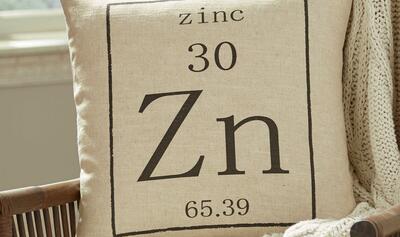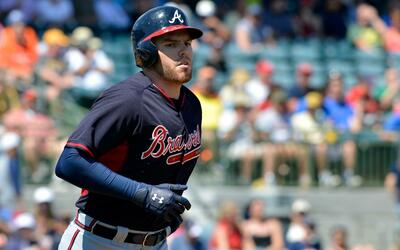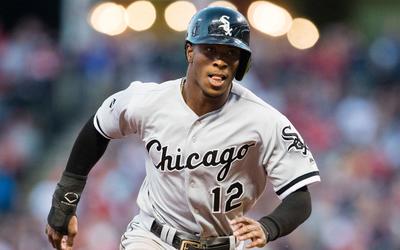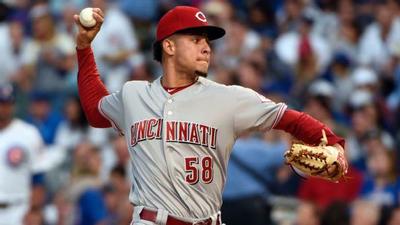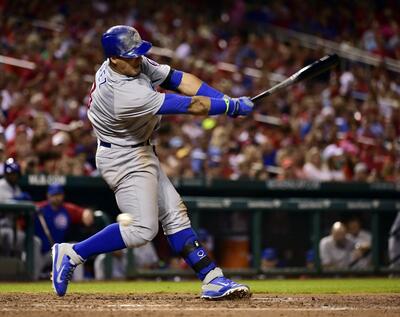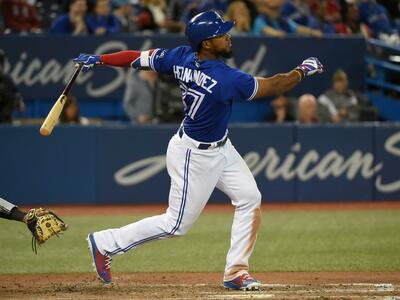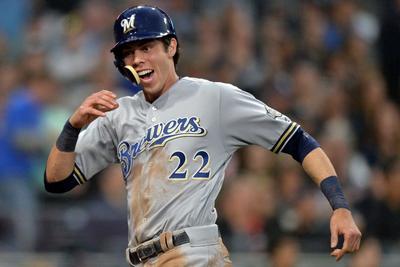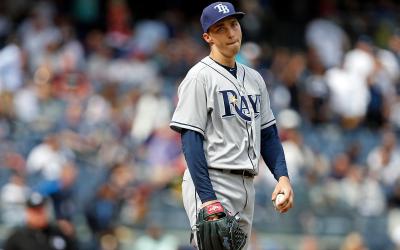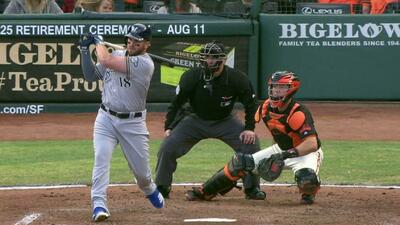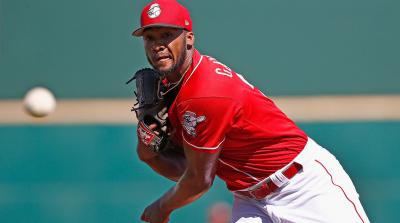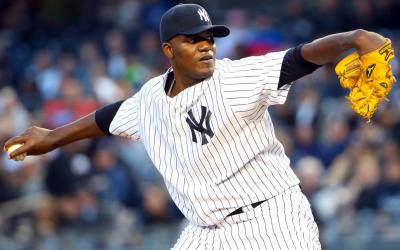Sabermetric Tuesdays: Analyzing Splits Ground Balls vs. Fly Balls
It’s Sabermetric Tuesday here at Fantistics! Each Tuesday we’ll dive into some of the deeper statistics we use to forecast and analyze the game of baseball. For those unfamiliar with the term Sabermetrics, Wikipedia defines it simply as: “the analysis of baseball through objective evidence, especially baseball statistics”. While some of the concepts can get a bit complex at time, the basic idea behind Sabermetrics is very simple. We’re just trying to understand the game of baseball a bit better through the use of mathematics, specifically statistics. With that in mind, let’s take a brief look at one of the statistics we use to help predict success on the mound: Groundball:Flyball Ratios.
Before we take a look at some of the leaders in GB% last season, let’s go through a quick lesson on why GB% is such an important statistic to use when evaluating pitchers. The concept behind the value of pitchers with a high GB Rate is derived from the concept of pitcher’s ability to control the outcomes of batted balls. Concepts on Batted Balls in Play were originally developed by Voros McCracken, who stated that once the Ball is put into play the Pitcher has relatively little control over the outcome. In a sense this made it so that we had only three true outcomes between a batter and a pitcher: 1) Walk, 2) Strikeout, and 3) Home Run, anything else was essentially left to luck. This is where the value of the ground ball becomes important. A ground ball can’t be hit for a home run and since most ground balls don’t go for extra bases, a pitcher who can generate more ground balls is able to limit one of the three true outcomes. Ground balls also have the added benefit of inducing double plays. Ultimately the best pitchers are the ones that limit the two negative “true” outcomes (HR’s and BB’s) the most while racking up strikeouts. Strikeouts and BB’s tend to be the best indicator of a pitcher’s success and as a result they represent the most talked about “peripheral” statistics, but often times pitcher’s with high GB Rates can slip through the cracks and become valuable “sleeper” types.
Let’s take a look at some of the pitchers with the best GB Rates from last season. I’ve paired their GB Rates with their K and BB Rates as well in hopes of identifying some sleeper pitchers heading into this season. A dominant pitcher will sport a K Rate above .70, a BB Rate below .30, and a GB Rate of better than 60%.
Pitcher’s that qualified in all 3 categories:
|
Pitcher |
GB % |
K Rate |
BB Rate |
|
Brandon Webb |
77% |
0.82 |
0.30 |
|
Felix Hernandez |
73% |
0.87 |
0.28 |
|
Jeremy Bonderman |
60% |
0.83 |
0.28 |
|
Derek Lowe |
78% |
0.74 |
0.30 |
|
Roy Oswalt |
63% |
0.73 |
0.28 |
Derek Lowe and Jeremy Bonderman are the two names that stand out in this space. Neither really classify as “breakout” candidates because at times in the past they’ve been pretty darn good fantasy players, but it’s important to note that the skills are still there for both of these pitchers. Lowe is one we’ve predicted to continue to build off last season and put up extremely useful numbers. I’ve commented in past entries this spring that Lowe is essentially Fausto Carmona 8-10 rounds later in the draft. Bonderman is a pitcher we’ve projected a bounce-back from, but not enough of a bounce-back to move him into the elite SP status. Bonderman’s got the skills to make a major step forward and playing with a loaded Tigers’ offense supporting him, Bonderman could be in for a big rebound.
In order to find real sleepers we have to dig a bit deeper though. Let’s take a look at some pitchers who are near qualifying for all 3 categories:
|
Pitcher |
GB % |
K Rate |
BB Rate |
|
Dustin McGowan |
65% |
0.85 |
0.36 |
|
Shawn Hill |
67% |
0.67 |
0.26 |
|
Paul Maholm |
66% |
0.59 |
0.28 |
|
AJ Burnett |
66% |
1.06 |
0.40 |
|
Joe Blanton |
61% |
0.61 |
0.17 |
|
Erik Bedard |
60% |
1.21 |
0.31 |
|
Joe Saunders |
60% |
0.64 |
0.32 |
|
Roy Oswalt |
63% |
0.73 |
0.28 |
|
Kevin Millwood |
62% |
0.71 |
0.39 |
|
Adam Wainwright |
60% |
0.67 |
0.35 |
|
Brad Penny |
62% |
0.65 |
0.35 |
|
Andy Pettitte |
60% |
0.65 |
0.32 |
|
Fausto Carmona |
77% |
0.64 |
0.28 |
|
Roy Halladay |
67% |
0.62 |
0.21 |
|
Jake Westbrook |
69% |
0.61 |
0.36 |
This list has a bit more of a “sleepers” feel to it. Bedard and Burnett have shown elite skills before, but their elite K Rates allow the potential for incredibly dominant seasons. Bedard’s K Rate exploded last season and we’ve projected a step back in the K Department, but his breakout has already happened. Similarly Burnett’s big breakout happened in 2005, but we could see a repeat performance this year in another contract season. Burnett flashed dominating skills in both his GB Rate and K Rate last year and with an improved Jays defense behind him, he could put together a massive year. Halladay, Penny, and Oswalt have settled into comfortable levels of performance and while they’re unlikely to post a “breakout” they’re still valuable SP options, despite some times getting over-valued because of their name value.
As for the sleepers, I’ve talked about Dustin McGowan enough this spring, but I’m “all-in” on the young Blue Jay. I fully believe we’re going to see a Top 30 SP season out of McGowan with the upside for Top 10-15. Adam Wainwright is another option we were touting last season and have shown confidence in this season with a favorable projection. Wainwright’s K Rate last season jumped in the 2nd half significantly, if he can keep the K Rate at his 2nd half level (.77), he could take some big steps forward this year.
Pettitte and Westbrook fall into the veteran category of useful spot start options. Their peripherals are fairly established so it’s unlikely we’ll see a breakout from either of them, despite the nice skill set for this exercise
Millwood is sort of in a category of his own as he’s shown dominant levels of performance in the past, but he pitches in a terrible park for a pretty bad Texas team.
Blanton broke out a little bit last season, but his K Rate has some limitations and as a result he’ll never break into the elite status of SP. As a result, I think he settles into the Tim Hudson type fantasy starter, which is a more useful #3. Maholm has some of the same issues as Blanton, as the lack of strikeouts will continue to hamper his fantasy value. His reliance on the GB could result in an occasional breakout in the sense that he could stumble into a low 4’s ERA, mid 1.30’s WHIP type season with some good luck on Balls in Play.
The two interesting names to me as deeper sleepers are Shawn Hill and Joe Saunders. Hill showed strong peripherals last season, but couldn’t stay healthy. Hill’s minor league numbers paint a similar picture, strong GB Rates and solid K:BB numbers, if he can just stay healthy he could put together a nice season. Saunders is getting a shot in the Angels rotation and pitching in a pretty weak division. His skill-set in this exercise is pretty similar to Brad Penny’s. Saunders is a nice sleeper in AL Only leagues and could make a jump into the reliable middle of the rotation fantasy starter, a la Joe Blanton.


